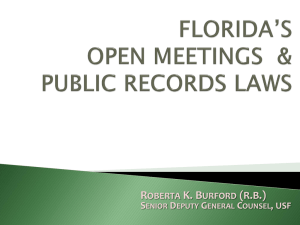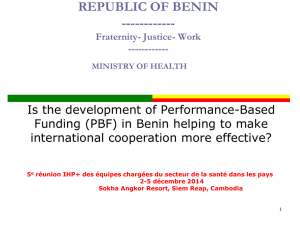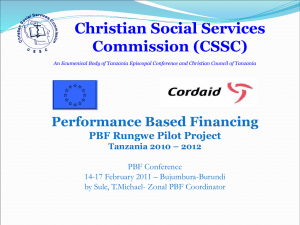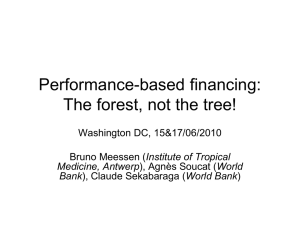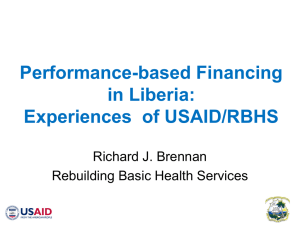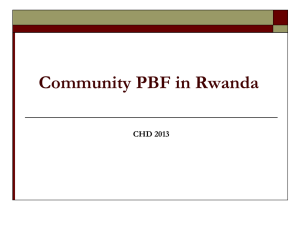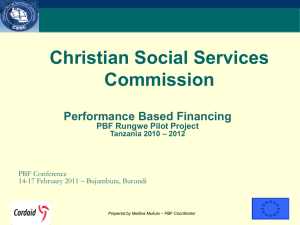Faculty Spring 2015 Presentation 20150122 (5)x
advertisement
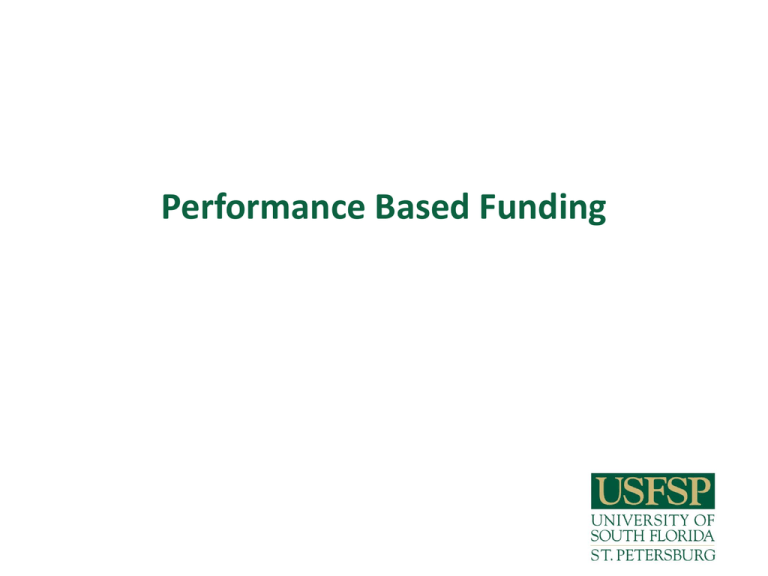
Performance Based Funding Background • The USFSP strategic plan calls for 10 in 10 (10,000 students in 10 years). • It is likely that this will require us to develop new programs. • As we start thinking of new programs, we need to be aware of two factors: – The program approval process – The way in which the state of Florida disburses funds to its public universities. The Basics of Performance Based Funding • Traditionally, state appropriations have been made on the basis of inputs, i.e. student head count. – Potential drawbacks: • Perverse incentive to hold back students; • Danger of enrolling under-prepared students. • Performance based funding makes (part of) the state appropriations depend on output, i.e. how well the institution does on certain performance criteria. – Potential drawbacks: • Rapidly shifting criteria may make long-term planning difficult; • Potential tensions between different criteria. Performance based funding in Florida I • Performance is measured on 10 criteria. – 8 are more or less the same for all public universities; – 1 is set for each institution by the BOG; – 1 is set for each institution by its BOT. • Up to 5 points are awarded for each criterion based on – Absolute performance; OR – Improvement in performance. Performance based funding in Florida II • Last year, the BOG withheld $35 million from the base budgets of the public institutions of higher learning. • Base budgets restored for institutions with a score over 25. • It also distributed around $200M in performance based funding, including restoration of base budget. • Notes: 1. The money can be used for whatever purpose the institution deems appropriate (unlike e.g. TEAm grant); 2. USFSP is NOT treated as a separate institution. The USF System is treated as if it were a single institution. Performance based funding in Florida III • The USF system received $22M in new funding, of which USFSP received around $2M. • Only UF received more in new funding. • The PBF becomes part of the base budget for the subsequent year. • USFSP used the PBF, among others, to – Strengthen advising – Hire instructors in English – Strengthen international recruitment. PBF 1. Percent of Bachelor’s Graduates Employed and/or Continuing their Education Further 1 Year After Graduation Score 80% + 5 75% 4 70% 3 65% 2 60% 1 USF System 75% USFT USFSP USFSM Only reported at system level PBF 2. Median Average Full-time Wages of Undergraduates Employed in Florida, 1 Yr after Graduation Score $40,000 5 $35,000 4 $30,000 3 $25,000 2 $20,000 1 USF System $35,200 USFT USFSP USFSM Only reported at System Level 2013-2014 benchmarks. Currently under review. PBF 3. Average Cost of Undergraduate Degree to the Institution Score $20,000 5 $22,500 4 $25,000 3 $27,500 2 $30,000 1 USF System $24,583* * Projection. To be confirmed by BOG. USFT USFSP USFSM Only reported at System level PBF 4. Six Year Graduation Rate (Full-Time and Part-Time FTIC) Score 70% + 5 67.5% 4 65% 3 62.5% 2 60% 1 USF System USFT 66% 66% 0 *IPEDS graduation rate is 31% down from 43% USFSP USFSM N/A 53% previous 61%* PBF 5. Academic Progress Rate (2nd Year Retention with GPA of 2.0 or higher) Score 90%+ 5 87.5% 4 85% 3 82.5% 2 80% 1 USF System USFT 85% 87% USFSP 80% 62% Previous 57%* *IPEDS: 65% USFSM PBF 6. Bachelor’s Degrees Awarded in Areas of Strategic Emphasis (Includes STEM) Score 60% 5 55% 4 50% 3 45% 2 40% 1 USF System USFT USFSP USFSM 36% 34% 72% 51% PBF 7. University Access Rate (Percent of Undergraduates with a Pell Grant) Score USF System USFT USFSP USFSM 30% 5 42% 42% 40% 41% 27.5% 4 25% 3 22.5% 2 20% 1 PBF 8. Graduate Degrees Awarded in Areas of Strategic Emphasis (Includes STEM) Score USF System USFT 50% 5 69% 72% 45% 4 40% 3 35% 2 30% 1 USFSP USFSM 36%* 27% *Previous: 34% PBF 9. Percent of Bachelor’s Degrees Without Excess Hours Score 80% 5 75% 4 70% 3 65% 2 60% 1 USF System USFT USFSP USFSM 77% 66% 65% 69% PBF 10. Number of Postdoctoral Appointees Score USF System 300 5 360* 275 4 250 3 225 2 200 1 * Projected USFT USFSP USFSM Only reported at system level Some Concluding Comments I • Some of the PBF metrics concern issues that we ought to address, and are addressing, anyway. – Retention • To me, a retention rate of 62% is not acceptable • QEP, University Success course, TRiO, Student Success Center • Establishment of retention task force – Graduation rate – University access – Controlling cost Some Concluding Comments II • Should the PBF metrics be a primary driver of our behavior as an institution? – Should we force students who can graduate without excess hours to do so? – Should we only start new programs in areas of strategic emphasis? – How much attention should we pay to starting salaries of graduates when we start a new program? – and so on Questions



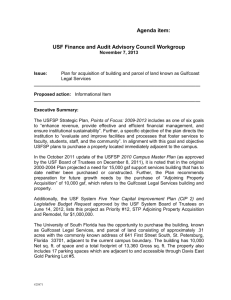
![USFSP Online Student Survey, March 2014 [doc]](http://s3.studylib.net/store/data/007234175_1-07900b6278644ef3eb283664abb696a2-300x300.png)
